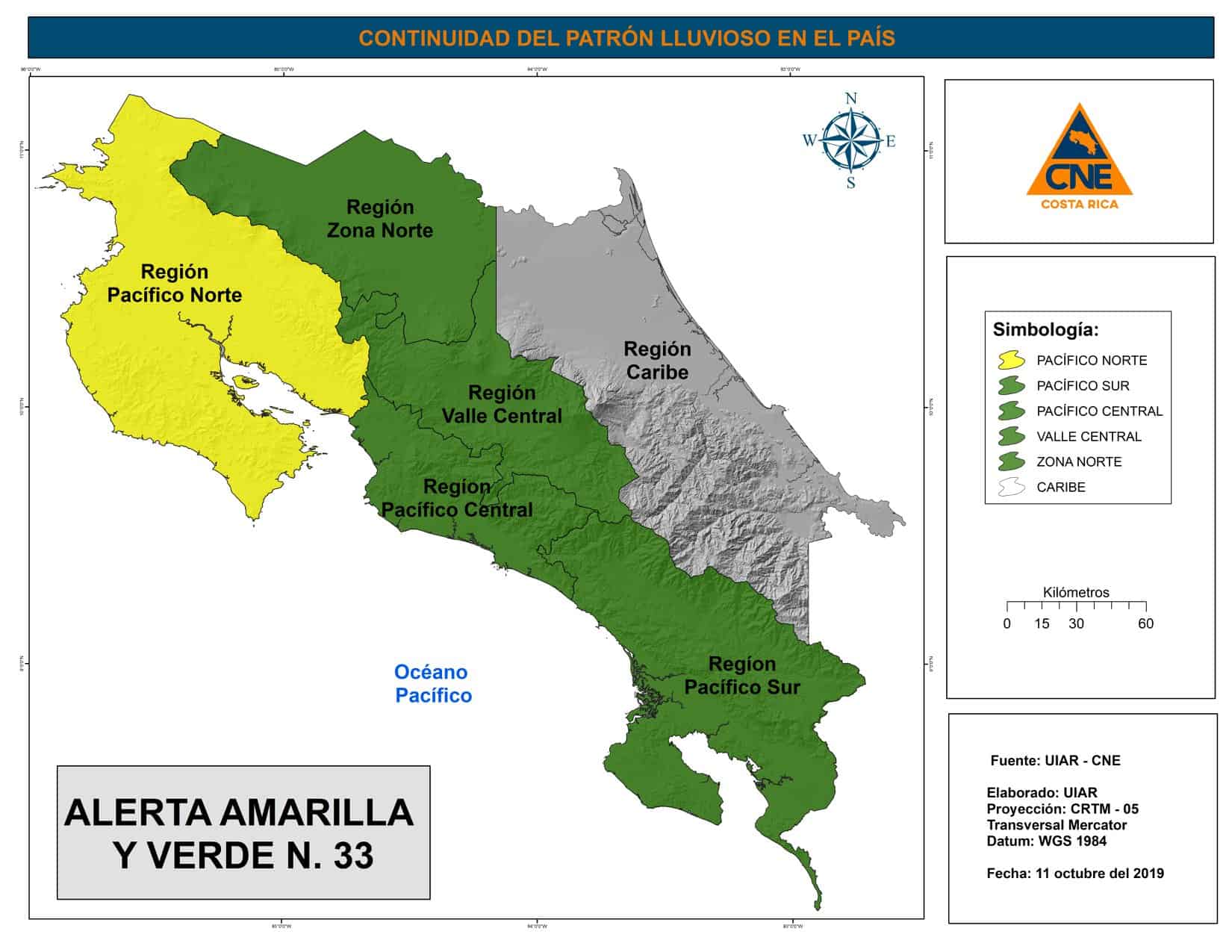The National Emergency Commission (CNE) in Costa Rica frequently issues green and yellow alerts for parts or all of the country.
In fact, right now all of Costa Rica is under alert due to heavy rains and soil saturation throughout the country.
But what do the color-coded alerts mean? We explain.
Green Alert (alerta verde)
A green alert is meant to be informative.
It is issued when Costa Rican authorities predict a phenomenon that could affect or endanger a community, region or the country. Often, CNE will respond by expanding communications to relevant institutions and the general public, and monitoring the phenomenon.
Yellow alert (alerta amarilla)
A yellow alert is meant to be preventative.
It is issued when the risk to a community, region or the country has risen, or when it’s confirmed a phenomenon will have a significant affectation on a population.
CNE responds by activating relevant relief protocols and taking pre-established precautionary measures. The organization will also prepare for search, rescue and/or assistance operations in case the situation deteriorates further.
Red Alert (alerta roja)
Much more rare, a red alert can only be issued in conjunction with the President of Costa Rica.
During a red alert, all emergency response teams are activated. This may accompany a large-scale evacuation of the public to shelters and be followed by an evaluation of damage to infrastructure.
For example, when heavy rains caused flooding and landslides on Costa Rica’s Pacific Coast last year, CNE issued red alerts for three districts. More than 1,000 people were evacuated.






